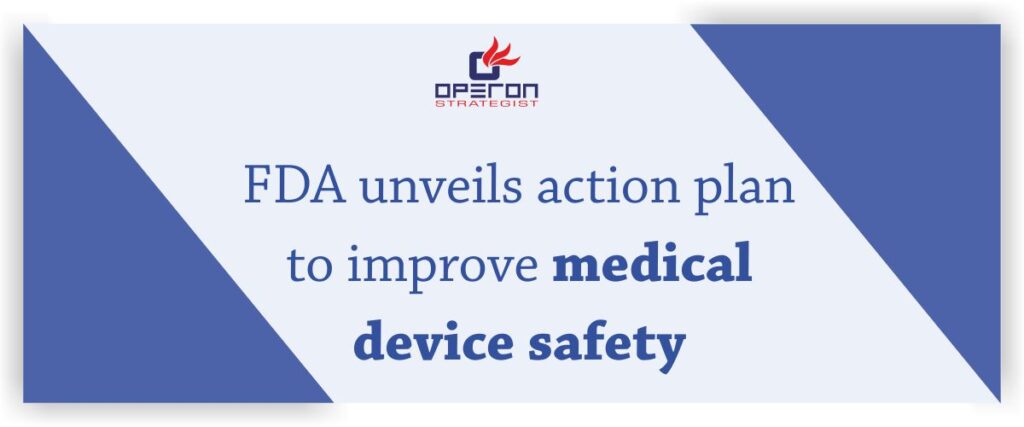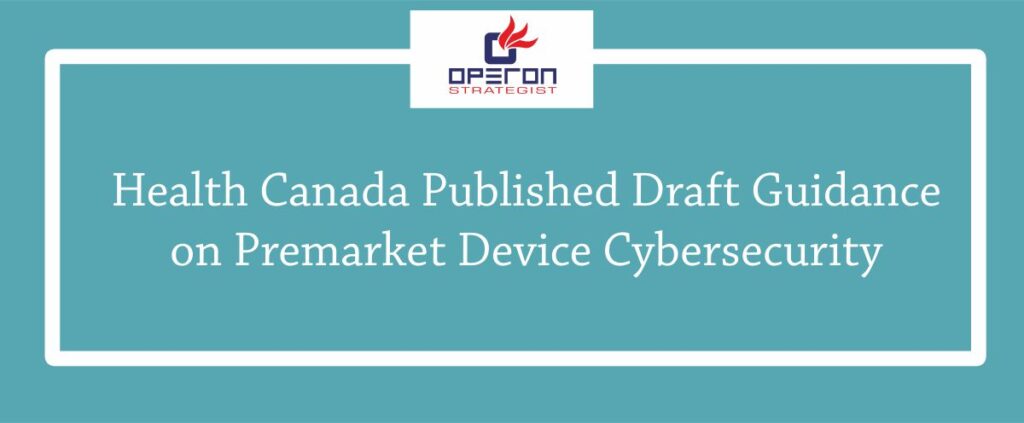For medical device safety the US Food and Drug Administration has unveiled a new action plan to ensure the safety of medical devices and patient protection while also driving innovation. A medical device is any product used for diagnose, cure, treat, a condition, or to prevent a disease, so it is necessary to use safety measures or precautions for medical device safety.
Titled ‘Medical Device Safety Action Plan: Protecting Patients, Promoting Public Health’, the proposal seeks better cyber security for devices with new and advanced technologies. In addition, the agency will work towards the optimization and implementation of post-market mitigations, and a combination of pre and post-market activities to track the total product life cycle (TPLC) of devices.
The FDA wants to ensure that products will meet the commercialization gold standard during their entire life cycle.
“New technologies that could make devices safer will be explored, along with ways to permit comparative safety claims to prompt competition for improving the medical devices safety features and of products.”
A statement by FDA Commissioner Scott Gottlieb read: “To deliver reasonable assurance of safety and effectiveness for certain highly complex technologies, we may need to require additional training or user education. “To do this efficiently under our existing authorities, we’ll consider issuing an umbrella regulation to identify these devices and mandate these requirements.” The agency additionally intends to invoke ‘restricted device authority’ on high-risk devices to improve patient protection.
Gottlieb added that the best way to impose these requirements will be considered in order to continue permitting the use of the devices, when necessary. Furthermore, new technologies that could make devices safer will be explored, along with ways to permit comparative safety claims to prompt competition for improving the safety features of products.
The action plan will also see new registries and Women’s Health Technologies Strategically Coordinated Registry Network (CRN) which is focused on clinical areas unique to women.
Gottlieb noted that the agency will seek additional funding and authorities from Congress for advancing medical device cyber-security. A new public-private Cyber Medical devices Safety Analysis board will be established to support the FDA as well as device manufacturers in improving the security.
To use medical device safety
Know how your device works. Keep instructions close by Understand and properly respond to device alarms Have a back-up plan and supplies in the event of an emergency Keep emergency numbers available and update them as needed Educate your family and caregivers about your device
In April, FDA released a five-pronged Medical Devices Safety Action Plan, full of rhetoric aimed at convincing the public that this new plan will enhance the agency’s commitment to patient safety and recognition that safety and innovation should go hand in hand. The FDA\’s strategic plan to improve medical device safety seeks to protect innovation and address unmet medical needs. Spur Innovation towards Medical Devices Safety
Some devices come to market after FDA determines that they’re substantially equivalent to another legally marketed device called the predicate – this is the 510(k) pathway typically used for moderate risk devices. for safer medical device FDA establish modern pathways like FDA 510(k) clearance .But predicates may be decades old. Our new “expanded abbreviated” 510(k) path to market may drive greater market competition for safer devices. It explains how objective performance criteria may be used to demonstrate substantial equivalence.
Medical device safety and effectiveness play a critical role in healthcare. Medical devices can range from a simple wooden tongue depressors or examination glove, to complex or life-saving equipment, such as pacemakers or medical imaging equipment. These medical devices are used in hospitals, doctors’ offices and in the home to diagnose, treat and prevent illness. Medical devices are an essential part of patient care, but if a defective or unsafe device enters widespread use it can have severe consequences. As Medical device regulatory consultant we help manufacturer in making 510(k) dossier which help them in getting 510(k) clearance.
-
adminhttps://operonstrategist.com/author/admin-2/
-
adminhttps://operonstrategist.com/author/admin-2/
-
adminhttps://operonstrategist.com/author/admin-2/
-
adminhttps://operonstrategist.com/author/admin-2/




